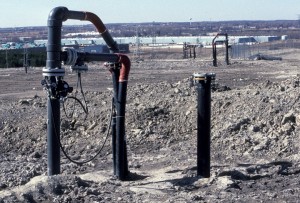People don’t necessarily associate landfills and solid waste with our energy and climate issues, but they are quite related. The more trash that goes to landfills, the more they emit methane, a powerful greenhouse gas, as the trash decomposes over time. Meanwhile, that methane could be harvested, purified, and used to generate electricity.
The issue may be even more pressing now that the U.S. Environmental Protection Agency appears to have badly underestimated the amount of trash Americans are sending to landfills:
For years, the U.S. Environmental Protection Agency relied on estimates to determine how much trash was being sent to landfills. But in 2010, the agency required most municipal landfills to measure and report how much trash was heading into the dumps, as part of an effort to lower heat-trapping methane emissions. Researchers at Yale University looked at the records for more than 1,200 landfills and calculated amounts, predominantly based on weights.
They figured it was 289 million tons in 2012, according to a study published Monday in the journal Nature Climate Change. For the same year, EPA estimated the figure to be 135 million tons.
That means an estimated 34.5% recycling rate may actually be 21.4%. That’s a lot of extra garbage at landfills that produce an estimated 91% of all methane emissions.
This information should give policy makers incentive to address two issues: first, ensure that we do a better job reducing landfill waste through more recycling and reusing of materials, plus better packaging; and second, we need to capture more methane from landfills to generate electricity, which can be done via underground pipes that let the methane seep into them.
It’s a multiple win scenario: less trash, less methane, and more renewable energy.
Leave a Reply
You must be logged in to post a comment.



